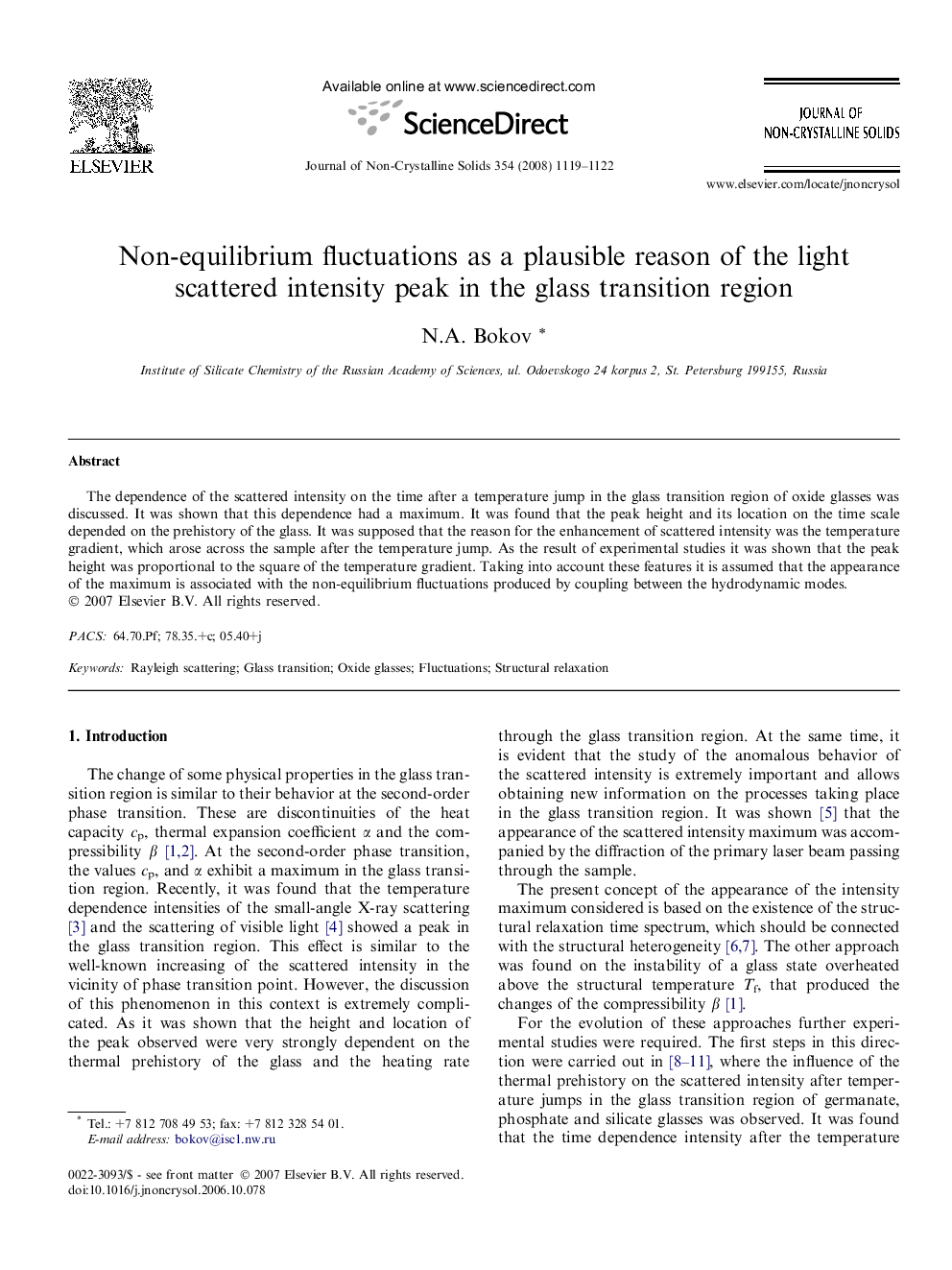| Article ID | Journal | Published Year | Pages | File Type |
|---|---|---|---|---|
| 1483053 | Journal of Non-Crystalline Solids | 2008 | 4 Pages |
The dependence of the scattered intensity on the time after a temperature jump in the glass transition region of oxide glasses was discussed. It was shown that this dependence had a maximum. It was found that the peak height and its location on the time scale depended on the prehistory of the glass. It was supposed that the reason for the enhancement of scattered intensity was the temperature gradient, which arose across the sample after the temperature jump. As the result of experimental studies it was shown that the peak height was proportional to the square of the temperature gradient. Taking into account these features it is assumed that the appearance of the maximum is associated with the non-equilibrium fluctuations produced by coupling between the hydrodynamic modes.
